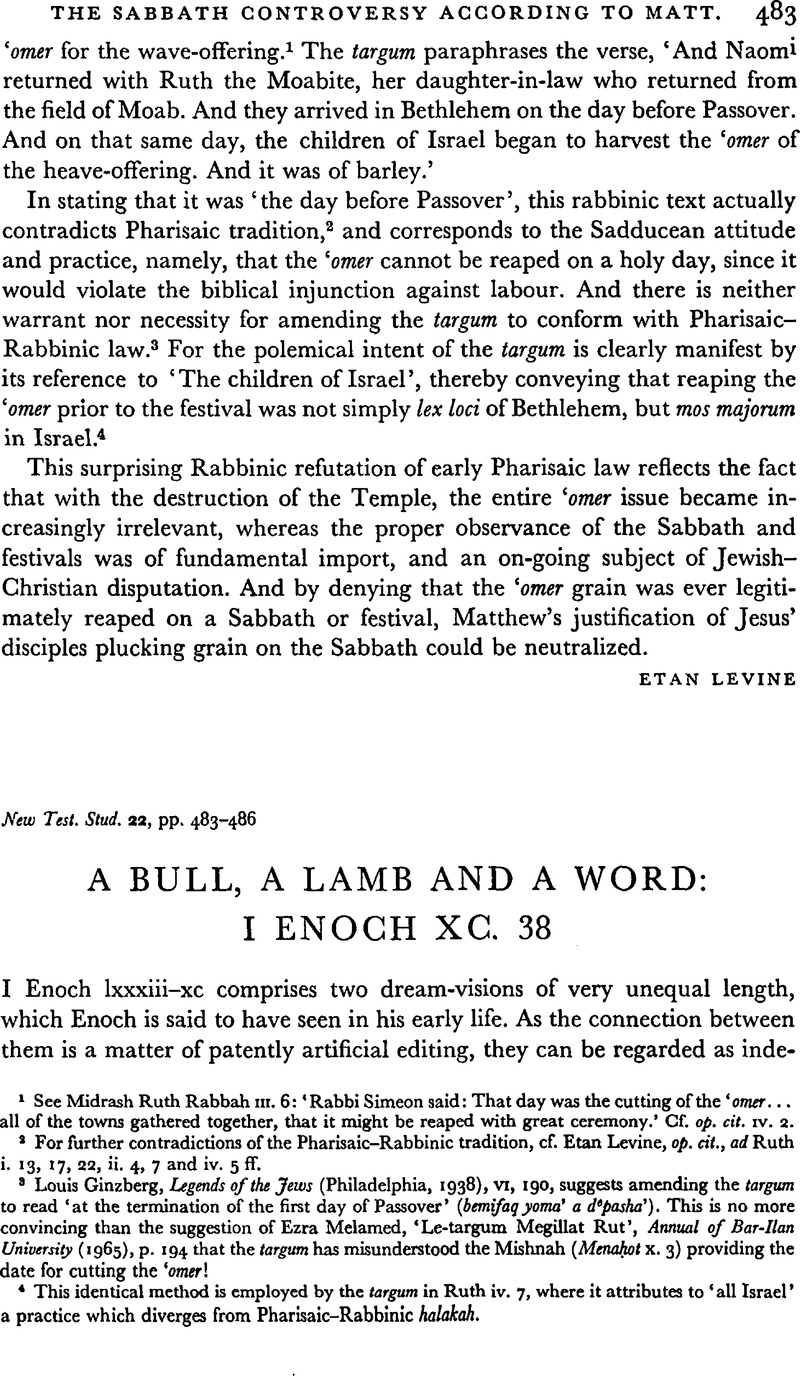Published online by Cambridge University Press: 05 February 2009

page 484 note 1 Translation of R. H. Charles, but with ‘word’ retained where Charles substitutes ‘lamb’.
page 484 note 2 Dillmann, A., Das Buch Henoch übersetzt und erklärt (Leipzig, 1853), pp. 287 f.Google Scholar
page 484 note 3 Goldschmidt, L., Das Buch Henoch (Berlin, 1892), pp. 90 f.Google Scholar
page 484 note 4 Charles, R. H., The Apocrypha and Pseudepigrapha of the Old Testament, 11 (Oxford, 1913), 260.Google Scholar
page 485 note 1 A Greek text of lxxxix. 42–9 has survived, which is printed by Charles alongside his translation from the Ethiopic. The Ethiopic at this point has ‘sheep’ instead of ’lamb’.
page 485 note 2 The Greek texts are defective and have to be supplemented from the Armenian. Both texts have clearly been subjected to Christian alterations. Charles thinks that the original read: ‘And I saw that in the midst of the horns a bull-calf became a lamb.’ For the Greek text, including Charles's retroversion of the Armenian into Greek, see Jonge, M. de, Testamenta XII Patriarcharum (Leiden, 2 1970), pp. 77 f.Google Scholar
page 485 note 3 This information is derived from Milik, J. T., ‘Problèmes de la littérature hénochique à la lumière des fragments araméens de Qumran’, H.T.R. LXIV (1971), 333–78Google Scholar. Publication of the fragments is expected shortly.
page 485 note 4 E.g. Num. xxiv. 3 f., 15 f. in Targum Onkelos, where it represents ![]() Both words are usually written
Both words are usually written ![]() , but it is probable that the older orthography would have been used at this period.
, but it is probable that the older orthography would have been used at this period.
page 485 note 5 Milik, , art. cit. p. 359Google Scholar, in discussing this passage, contents himself with reaffirming Dillmann's theory, though in Aramaic form, and does not mention Goldschmidt's theory or offer any fresh suggestion.
page 485 note 6 Of course this was not strictly necessary in order to secure a Christian application, as the Greek translation was certainly undertaken later than the New Testament, so that ό άμνος του θεου ( John, i. 29, 36Google Scholar) and το άρνιον (Rev. v. 6, etc.) were already established as titles of Christ. Nevertheless it may reflect the importance of the Logos doctrine for christology at the time when the translation was undertaken. Dodd, C. H. (The Interpretation of the Fourth Gospel (Cambridge, 1953), pp. 230–8CrossRefGoogle Scholar) has argued that the Lamb titles are derived from the present passage, but in fact King David, (lxxxix. 44Google Scholar) and the Messiah, (xc. 38Google Scholar), though introduced as lambs, perform their functions as rams (so also xc. 9, if that refers to the Messiah), and consequently the theory has not won acceptance among scholars.
page 486 note 1 The difference is only semantic, as nagar frequently translates λόγος in the sense of speech (e.g. Gen. xxxiv. 18; Isa, Google Scholar.